When I’m at the dog park with my human and canine friends, I often find myself observing the various breeds that are matched up with their humans, and sometimes I marvel at how in the world some matches ever happened! For instance, I might see a frail little woman in her 80s, holding the leash of a gigantic English Mastiff, and ask myself how in the world she can manage to handle a dog of that size. Or I’ll notice a 20-ish man who looks like he works out 24 hours a day and eats biker dudes for breakfast, cuddling a Shih Tzu.
Of course these aren’t typical matches, which is exactly why I notice them. Being of a curious mindset, I started wondering if there are any real patterns to dog ownership, and I was surprised to discover that the type of dog you choose has a lot to do with your age.
The Numbers
It would probably be impossible to attach any specific breed overwhelmingly to any age group, but Statista has broken down dog ownership by age in the United States according to small dog breeds versus large breeds. Their figures indicate that if you are between the ages of 18 and 29, there will be no significant difference in the type of dog you choose – 38.42% of people surveyed owned large breed dogs, and 38.96% had small dogs.
With middle age (30-49), large breeds have a bit of an edge, with 43.6% of survey participants owning large breeds and 41.9% owning small breeds. Once you get into the senior years, though, there is a pronounced difference – 33.24% of people between the ages of 50 and 64 own large breeds, and 47.61% favor small breeds.
Flawed Data?
If you think you’re perceiving a flaw in the Statista survey, I believe you’re right, but there’s not all that much information out there on dog ownership by age in the United States, so this is really all I have to go on. The flaw, of course, is that Statista does not define what is meant by a large breed, or a small breed, and does not allow for mid-size breeds.
Perhaps this is because Statista perceives that there may be some “overlap,” say, between people who prefer Rottweilers, Pit Bull types, Boxers and other large breeds, and those that lean toward Shih Tzus, Dachshunds, Yorkies and other small breeds, and assumes that breeds like Basset Hounds, Whippets and Border Collies fall somewhere in the middle and don’t really skew the results.
I think that’s probably a reasonable approach. A statistician might beg to differ, but for general purposes, and for the purposes of this article, I believe it works. So let’s proceed under that assumption.
Why Big Versus Small?
What motivates a person to choose a big dog over a small one, and vice versa? Why is it age related?
There could be any number of reasons why one age group “connects” with dogs of a particular size, while another age group goes in the opposite direction. If you look at the marked lack of difference in size of breed when it comes to millennials, it might just be a case of the heart wanting what it wants. When you consider the slight preference in the over-30 group for large dogs, it could be that this is the group that is more financially stable and contains more home owners, meaning that they have the infrastructure in place that allows for ownership of a large dog. And with seniors, it might be that mobility issues and “downsizing” are factors that make small dog ownership more practical.
Misconceptions?
Of course we’ve all heard of, and observed (as I suggested in the introduction to this post) matches that don’t seem to make sense. Maybe that’s because there are people in any age group that recognize, and reject, some of the misconceptions when it comes to dog ownership.
The 80+ woman that I encountered at the dog park, for instance, knows that these gentle giants really aren’t likely to yank you all over the place chasing after squirrels – they’re happiest when they’re just lazing around, snuggling up with their human. And that bodybuilder with the Shih Tzu? He knows that those little guys will chase a ball from sunup to sunset, and probably wear him out in the process!
There are all sorts of misconceptions out there about big and small dogs, so let’s talk about them.
Big Dogs
Let me say at the outset that you’re probably never going to convince a “big dog person” that he or she would be just as happy with a small breed, and no likelihood of making a person whose heart leans toward the little guys believe that they’d just adore a big dog if only they had one. If you’re sitting the fence, though, it’s important to know that there are misconceptions about dogs of all sizes. You don’t want to deprive yourself of a perfectly wonderful companion because you’ve bought into myths that have no basis in reality.
There are some truths about large breed dogs, of course. Most of the time they’re not going to do well in apartments or small houses, although there are exceptions. Usually they’ll cost you more in veterinary care, since they’re often more prone to health conditions. However, small breeds can also rack up the vet bills – Pugs, for instance, are prone to breathing problems, Dachshunds vulnerable to spinal problems, and Beagles… well, Beagles get hit by cars because once they decide to run after something, there’s usually no calling them back. You get the idea – when it comes to vet bills, bigger doesn’t always mean more expensive.
Here are some other “big dog” misconceptions
1. Big dogs are hard to train
You may have also heard that large breed dogs are harder to train than small dogs, but they’re not. They’re every bit as intelligent and trainable as dogs of medium to small size. The issue here is not intelligence, but willingness. Think of it this way – if a Toy Poodle doesn’t want to go “walkies” with you, you can drag him along. Can you do that with a 240-pound English Mastiff? I think not. But if you start work early, when your big dog is just a small big puppy, he’ll be just as trainable as any other dog.
2. Big dogs need more exercise
It’s actually the breed of dog that determines how much exercise it needs – not the size. For instance, English Mastiffs are literally the biggest dogs in the world, but they’re couch potatoes. A walk or two a day will usually get the job done.
The Border Collie, though, is a lot smaller, but has significantly more energy, and if not exercised often, will become bored and destructive. You’ll probably find that your Border Collie or other herding dog will need at least two hours of exercise, spread out over the day. Your English Mastiff, on the other hand, can get by on about 20 minutes to half an hour.
3. Big dogs aren’t good with kids
Hey, Lassie was a big ol’ Collie, and always pulling Timmy out of well, right? How was that not being good with kids?
Okay, I’m joking. But seriously. Let me tell you a story about a friend of mine.
In previous posts, I’ve told you about Neila, my Rottweiler-breeding friend. At one point, Neila placed a puppy in a household with no children, and a week later, she got a call from the woman who adopted the puppy. The woman had found herself expecting a child – unexpectedly. She was worried, and wanted to know if Neila thought she should bring the puppy back.
Neila didn’t think so, and the adoptive Rottie mom didn’t really want to. They decided that there shouldn’t be a problem.
There was.
What kind of problem?
Well, once the baby was born, the Rottie pup, then about 9 months old, decided that the newborn was HIS baby. He’d lie by the crib and growl at anyone who approached. It took a while before the dog decided that the natural parent wasn’t a threat, and even then, it was like “Okay, you can pick up MY baby, but be careful!”
The dog and the baby were inseperable for nine years.
That actually wasn’t the problem. The real problem occurred nine years later.
See, Rotts only live for about 9 years. So when the unexpected, unplanned child was just about 10, his best friend died. He’d never been without the dog – he didn’t know a time when the dog wasn’t there, and he was devastated. His parents were grieving too, of course. It was a horribly sad situation all around (for more on dealing with the death of a child’s dog, see my post, Explaining a Dog’s Death to Your Child).
I guess that was a long digression, but regular readers know that I tend to do that. My point here is simply this – big dogs, properly raised, are no threat to children. In fact, they can be a child’s best friend and most loyal protector.
4. Big dogs eat more than little dogs
This isn’t necessarily true. Most of the time, if you leave food out for you dogs, they’ll eat as much or as little as they need to maintain their body weight.
5. Big dogs need more exercise
Of course there are exceptions, like lazy English Mastiffs! Most of the time, though, the bigger the dog, the more exercise it will need.
6. Old people shouldn’t have big dogs
Most of the time, this relates to the ability to exercise the dog. It’s not etched in stone, though. If you’re elderly and having trouble getting around, sometimes a big, gentle dog can help you get around more than a small dog can.
7. You have to have a big house for a big dog
Usually, big dogs like to have a lot of room to run around, but this isn’t a universal truth. Lazy Mastiffs can do very well in an apartment. Even active dogs can do well in small spaces provided that they’re exercised regularly.
Size of the dog, and the home, should not be the sole consideration when thinking about what kind of dog you should have. It’s more about how prepared you are to meet the dog’s needs.
8. Big dogs are messy
It’s generally true that a big dog will shed more than a small dog. However, with regular grooming, you shouldn’t have more of a mess in your house than you would with a small dog.
Of course it takes more time to groom a big dog than it does a small dog, so make sure to get ready and have all your grooming supplies at hand.
9. It’s difficult to travel with a big dog
It can be, if you’re flying and intent on having your dog travel in the cabin with you. A small dog might be able to travel in a carrier under your seat. However, big dogs can be transported in the cargo hold of the plane. If you’re driving, it really makes little difference whether you’re travelling with a small dog or a big one.
These are just a few misconceptions about big dogs. And I’m not saying that big dogs come without problems, just that some of those problems are exaggerated by people who don’t really know big dogs.
If you’re considering a big dog, and you’re wondering if it’s the right choice, talk to other dog owners, to your vet, and to animal behaviorists. Don’t buy into the myths.

Related Content:
11 Ways to Help Your Dog Make the Most of His Senior Years
Top 9 Mistakes New Dog Owners Make
7 “Storm Season” Tips for Dog Owners
Small Dogs
Although I think that myths are more often attached to big dog breeds, the little guys are also vulnerable to stories that really don’t hold water. Probably the most common myth is that small dogs are yappy little nuisances.
This is true in a lot of cases, and I’m not going to tell you otherwise. You’d just call me a liar if I did, because I’m sure you’ve met some of the horrid little things. However, any dog can be noisy if not trained, and a properly trained small dog doesn’t have to be a yappy nuisance.
Here are some other myths about small dogs.
1. You don’t need to exercise small dogs
This is so wrong! Small dog breeds like terriers have been raised over centuries to hunt out rodents and track down game, and that means that they’re very active and agile. A small breed like a Yorkie, Jack Russell, Dachshund, Rat Terrier and more are very high-energy and need a lot of exercise. If they don’t get enough exercise, that’s when they turn into noisy, destructive little monsters!
If you don’t want your small dog to become a public nuisance, you absolutely need to make sure that he gets enough exercise to keep him from being bored.
2. Only girls want small dogs
We all remember those little purse dogs that Paris Hilton and Nicole Ritchie were carrying around, and then all of a sudden disappeared from public view. What happened to them?
Well, from what I’ve seen down at the dog park, I’m thinking that they all ran away from those celebutantes and ended up with old men. Old guys with little dogs down at the dog park are about as ubiquitous as “special sauce” on a Big Mac!
So what do those old men know about small dogs that leads them to want them?
I think it’s this – small dogs often have really big personalities! They can be loyal to distraction, and utterly fearless. They don’t just belong in designer purses – they can rip those purses to ratshit if they want to, and do their best to protect their dad in the process.
3. Small dogs are easier to groom
Um… NO! If you’re thinking you’ll get a pass on grooming with a small dog, think again. Many small dog breeds have very heavy, thick coats that require grooming on an almost daily basis. Conversely, a large breed dog with a short coat may require very little grooming.
4. Small dogs are easier to house train
Again, no. Granted, if a small dog like a Toy Poodle messes on the floor, it’s going to be an easier cleanup than if your German Shepherd goes potty in the house, but here’s the thing – it’s more likely to happen. Small dogs have small bladders, and often can’t hold their urine as long as a big dog.
5. Small dogs are less aggressive than big dogs
They’re not, really. In fact, they can be more aggressive, because people tend to overlook aggressive behavior in small dogs, or worse, think it’s cute.
Aggression is never cute. So if you have friends who are saying things like “Oh, isn’t that adorable’ he’s guarding his food,” or “Isn’t that precious, he’s grabbing my ankles,” put a stop to it immediately. It’s not cute. It’s territoriality and dominance behavior, and it is not desirable!
Many small dogs (terrier breeds especially) also have a very high prey drive, and that can make them dangerous to have around other animals.
6. Small dogs are less expensive to keep than big dogs
Small dogs will cost less to feed, but when it comes to vet bills, they can be just as expensive. They might not cost you a fortune with disorders like hip dysplasia, but they can be prone to things like entropion and breathing disorders. Also, small dogs will live a lot longer than large dogs, and thus over the long term can end up costing you as much or more.
7. Small dogs aren’t good with kids
As you can tell from the story I told you about my friend’s Rottweiler puppy, size really doesn’t enter into it when it comes to whether or not a dog is good with children. Any dog, of any breed or size, can be good or bad with children. In fact, in 2001 a Pomreranian killed a 6-month old child in Los Angeles. A Pomeranian is not a big dog, and this was basically the “death of a thousand bites.”
That said, though, small dogs can be very gentle and prone to cuddling with kids. Just make sure that you never leave a child and a dog, of any size or breed, unattended together.
8. Small dogs snap at you
Any dog, if not properly socialized, can be snappy. The trouble here is, again, that a lot of misguided idiots think that when a little dog snaps, it’s cute – “Oh, isn’t that adorable – the thinks he’s a Rottweiler!” It’s not cute – it’s completely unacceptable in any dog of any size, and you should never let your dog get away with snapping.
9. Small dogs are better than big dogs with other animals
This is so far from the truth it’s not even funny! Small dogs can be very territorial, and often don’t want to give up any part of their territory to any other animal. They also usually have a very high prey drive that leads them to want to kill other animals, like cats, gerbils and birds that they might come into contact with. If you’re bringing a small dog into your household, make sure that other small animals are kept out of reach.
So what’s the final word on little dogs?
They’re cute. They can be loud, but proper training can go a long way to reduce “yappiness.” If you want a small dog, there are no really good reasons why you shouldn’t have one, so as is the case with big dogs, don’t buy into the myths.
Now, knowing where you fit in 2018 in terms of dog ownership by age in the United States, what dog will you choose? Will it be a small dog or a big dog? You’ll have to think about a lot of things before you make your decision, and size is one of them.
So what are the differences between small and large dogs? Here are the most common differences.
These are just a few of the pros and cons. Now, let’s do a quick, one-off pro and con.
Pros of Small Dogs
- They’re adorable!
- They fit in your lap.
- You may spend a little bit less on dog food.
- They generally do well in apartments and small houses.
Cons of Small Dogs
- They can be nasty and snappish if not properly trained.
- They’re hard to potty train.
- Some of them never shut up!
Pros of big Dogs
- They’ll protect you with their life.
- They’re generally easy to house train.
- Most large breeds are good with kids.
Cons of Big Dogs
- Big dog, badly trained, means BIG bite!
- Vet bills can be very expensive.
- Some people may assume that your dog is vicious, simply because of his size.
Keep in mind that these are just generalizations. Not all big dogs are destructive, and not all small dogs are well-behaved, and as soon as you think you know all the rules, the dogs will re-write the rule book!
How to Choose
If you’re vacillating between large and small breeds, there are things to consider. The most important is your living situation. Do you live in a house or an apartment? Do you rent or own? If you rent, how does your landlord feel about dogs? Will he let you have a big dog, limit you to a small dog or tell you that you can’t have a dog at all?
Now, do you have kids? As you can tell from my story about my Rottie friend, I don’t’ necessarily think that you should forego a big dog. But you need to know how the kids are going to react to the dog, and how the dog is going to react to the kids.
Another thing to consider is the depth of your pockets. Big dogs can cost you a lot of money, because they’re prone to a lot of costly disorders. Just as an example, hip dysplasia can cost you over $10,000 if your dog needs a double hip replacement, and the alternative to the hip replacement is euthanasia, unless you have pet insurance.
You also want to consider the type of dog that best fits your personality. Do you love to be outdoors all the time, or would you rather just lie on the couch and binge-watch Netflix?
Are there really dog breeds that are better suited to one age group over another? I’ve been able to find some examples of breeds that are considered to be better for millennials and breeds that are more suited to seniors, but nothing in between. Perhaps this is because, as I suggested before, there’s a certain amount of overlap. Let’s take a look at some of the most-recommended dog breeds for millennials and seniors.
Best Dogs for Millenials
According to what I’ve been able to determine, millennials are the age group most likely to own dogs – an astounding 75% of millennials are dog owners, compared with about 50% of the population as a whole. If you’re a millennial, and thinking about getting a dog, here (in alphabetical order) are some of the breeds you might consider.
1. Australian Shepherd
The Australian Shepherd is a breed with a lot of energy and intelligence. They learn quickly, and training them can be a lot of fun. They need quite a bit of exercise in order to be physically and emotionally healthy, so if you’re a millennial that enjoys vigorous exercise, the Australian Shepherd could be the right dog for you.
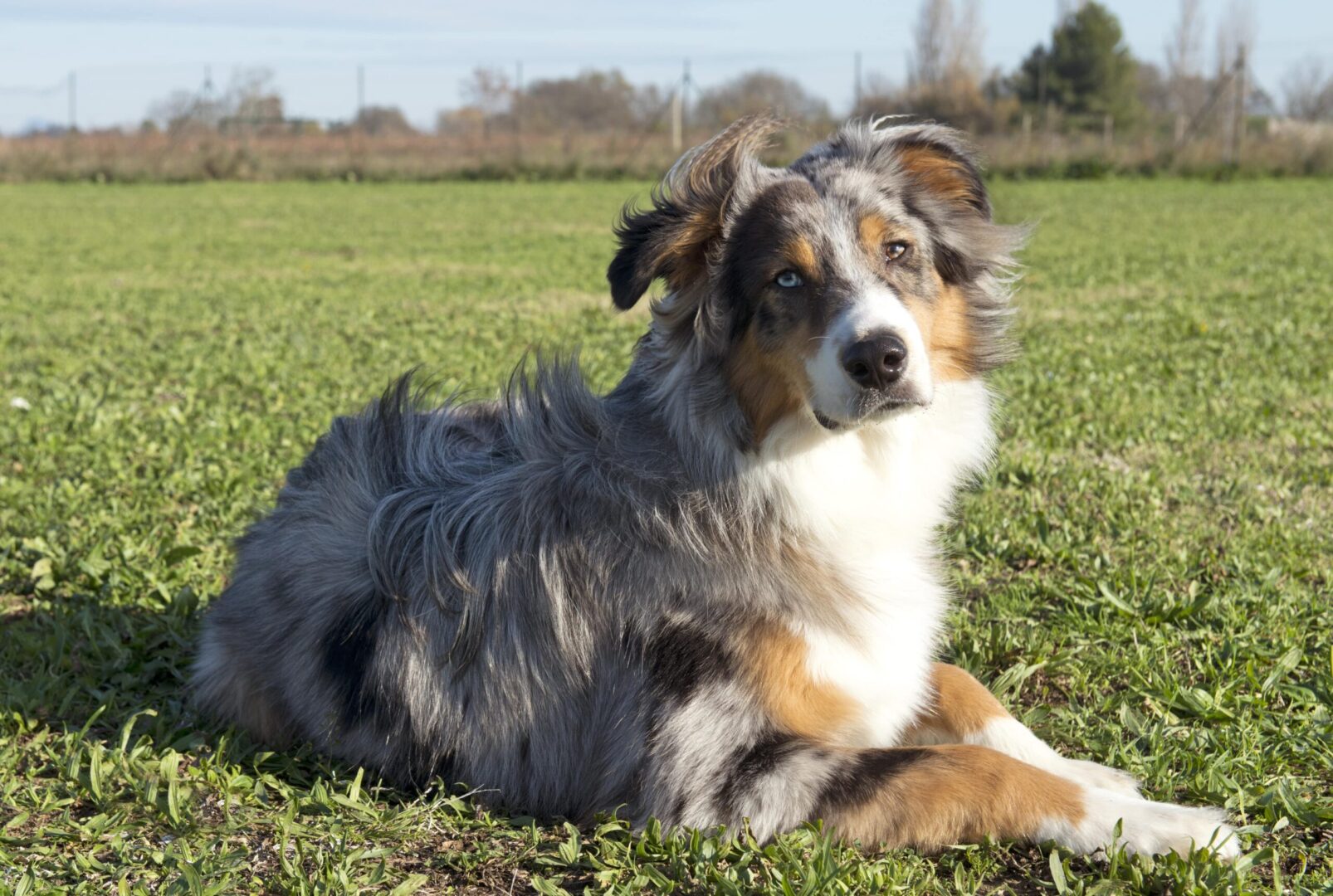
2. Belgian Malinois
This is a big breed, and very athletic. The Belgian Malinois needs a lot of exercise, so if you have an active lifestyle, you’ll do very well with this breed. The Belgian Malinois is also very trainable and intelligent – qualities that have made the breed highly popular for police work.
One thing you need to know about these dogs, though, is that they’re not “disposable” – not that any dog should ever be thought of this way. The Malinois, though, will bond to you hard and fast, and end up heartbroken if you end up deciding that he doesn’t fit your lifestyle, so think long and hard before choosing this breed.
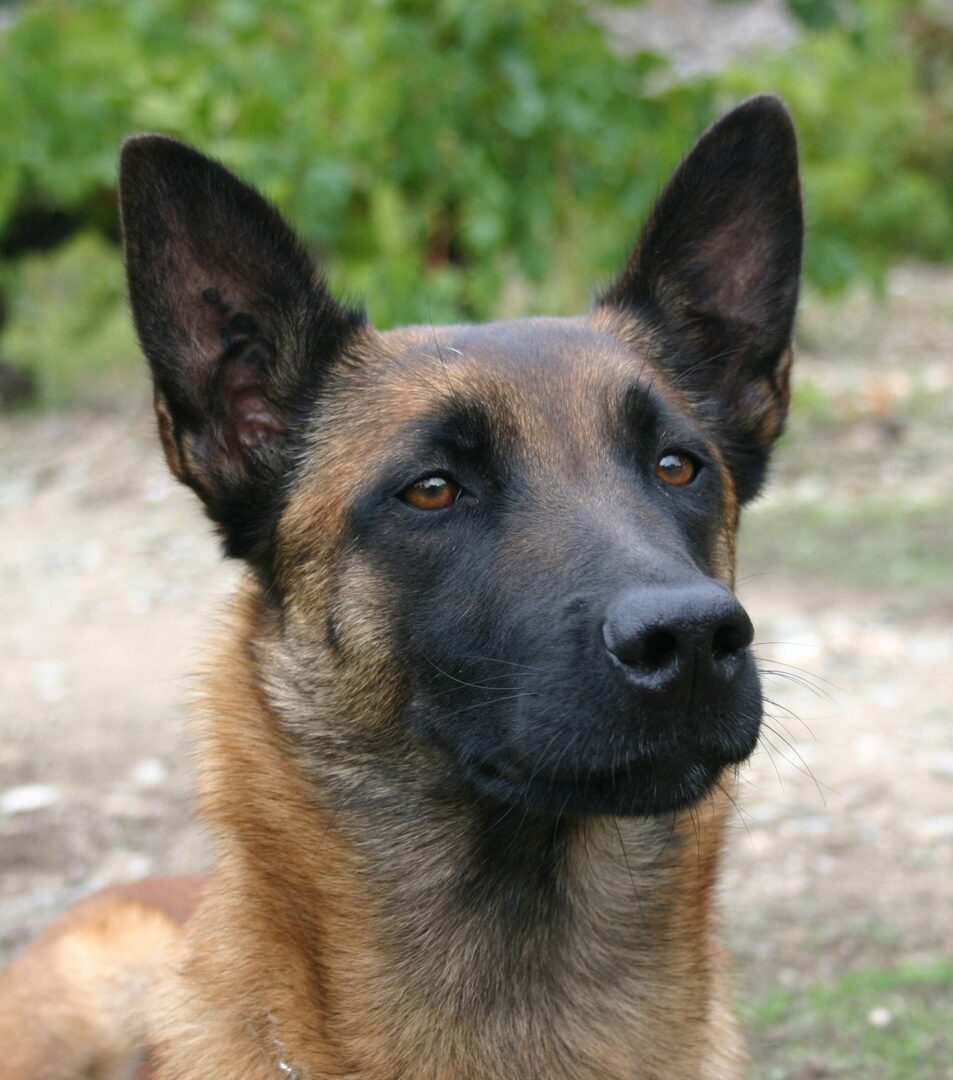
3. Boston Terrier
A lot of millennials are apartment dwellers, living in big cities and working hard to carve out a career in our increasingly competitive job market. Today’s worker may not have a lot of time to devote to exercising his or her dog, and no access to wide open spaces. The Boston Terrier doesn’t require a lot of exercise, so he could be the perfect dog in this sort of situation. Boston Terriers are also typically friendly and not overly “barky,” so they can fit in very well in settings where neighbors are in close physical proximity.
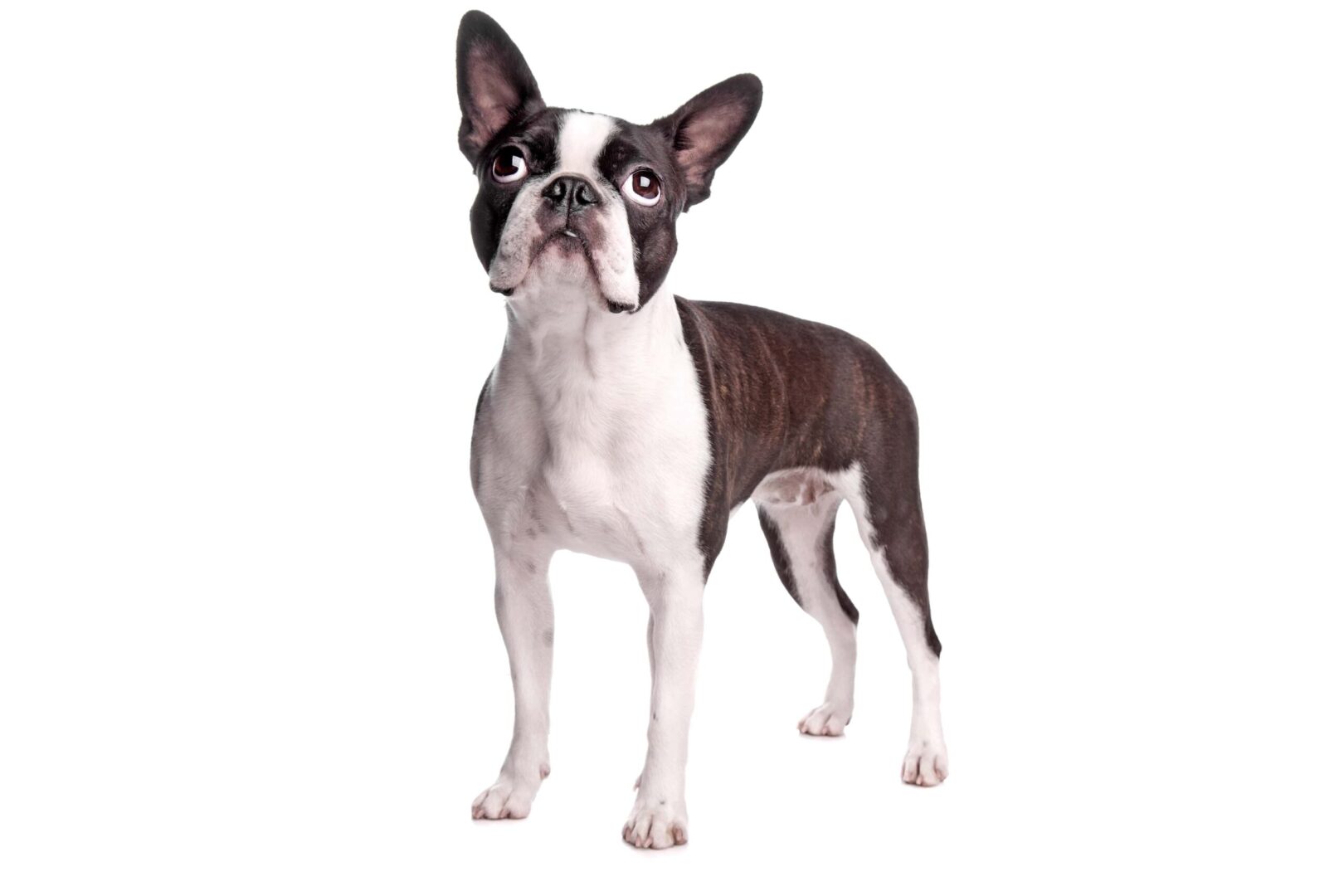
4. Dachshund
Dachshunds typically require a bit more exercise than the more laid-back Boston Terriers, but they still make great apartment dogs. They’re a little more “needy” when it comes to human companionship, though, so if you’re considering a Dachshund and you have a heavy work schedule, you might want to consider enrolling him in doggie daycare, or hiring a pet sitter for a few hours each day.
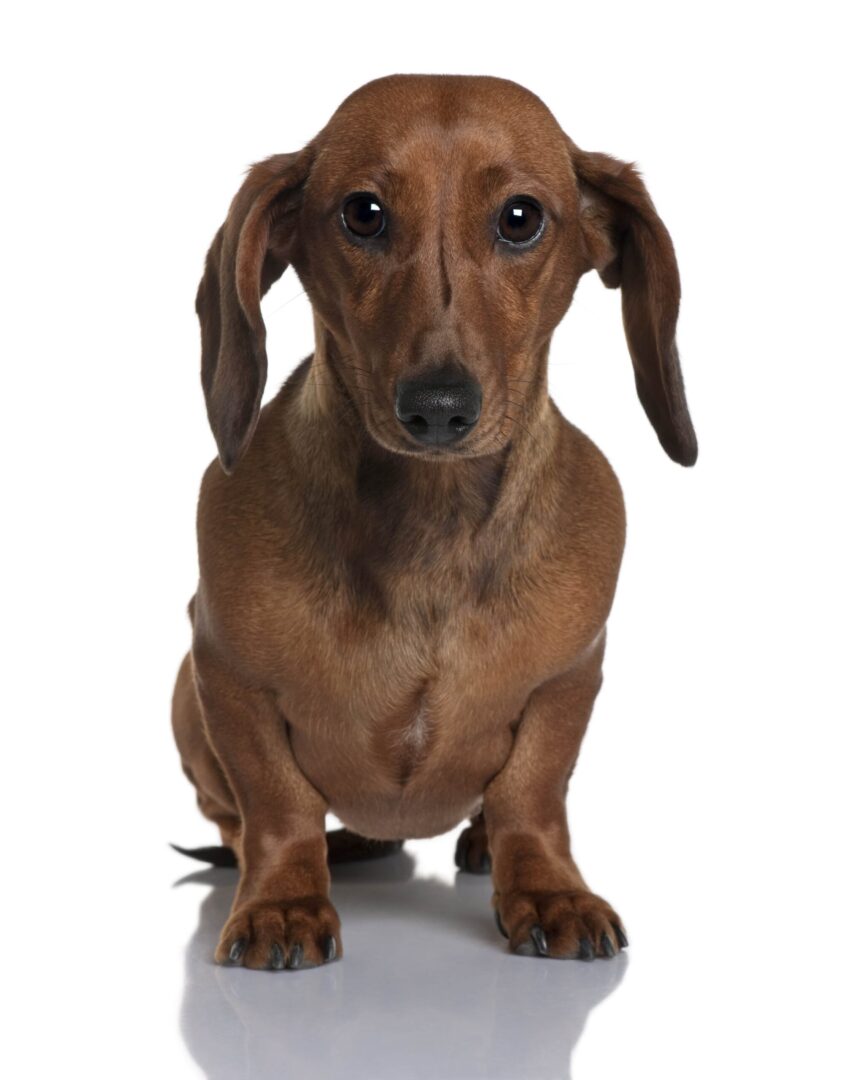
5. Miniature Schnauzer
The Miniature Schnauzer takes a lot of his personality from his larger cousin, the Giant Schnauzer. Highly energetic and playful, this is an extremely intelligent breed that is ideal for millennials who enjoy an active lifestyle. If you’re part of a millennial couple that’s considering adding a human baby to your household, the Miniature Schnauzer is also great with kids!

6. Pembroke Welsh Corgi
Corgis are typically not thought of as “millennial” dogs, being the favorite breed of Queen Elizabeth of England, our favorite nonagenarian. Her Majesty has owned and bred Corgis for generations, but she may be slowing down a bit when it comes to exercising her dogs. One would assume, though, that she has staff that can give these energetic dogs the activity they need.
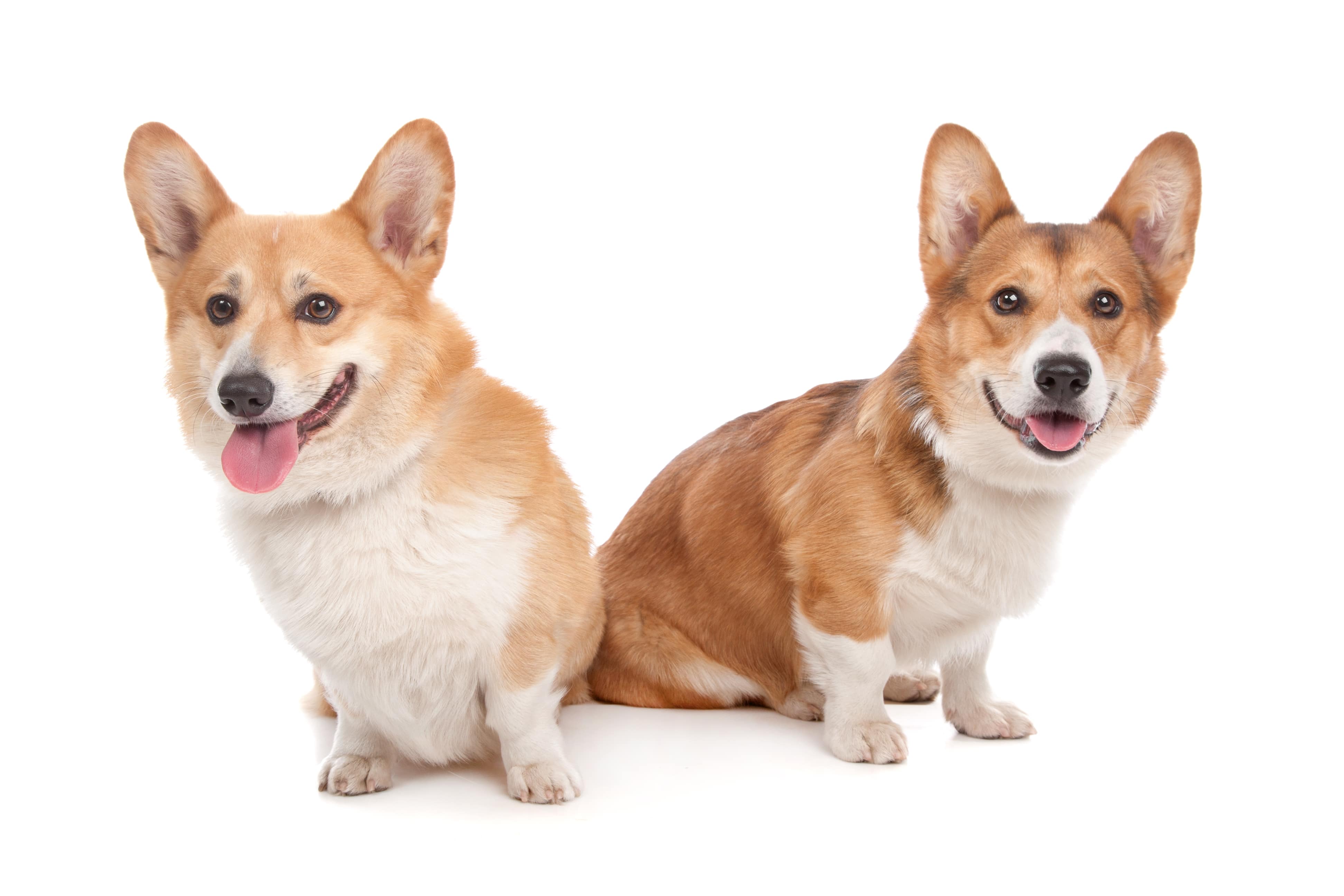
If you’re considering a Pembroke Welsh Corgi, and don’t have staff (most of us don’t!), just make sure that you can devote enough time to keeping your dog exercised and entertained.
7. Shiba Inu
If you’re a typical millennial, you won’t have made it as far as you have in this world without a lot of smarts and a fierce sense of independence. The Shiba is also very intelligent, and sufficiently independent that you can feel safe leaving your dog alone without having to worry about separation anxiety.
Of course, no dog should be left alone for hours on end, so make sure your Shiba gets quality time with you. You’ll find that these dogs will happily nap the day away, but once you’re home, they’ll want play time and snuggles!
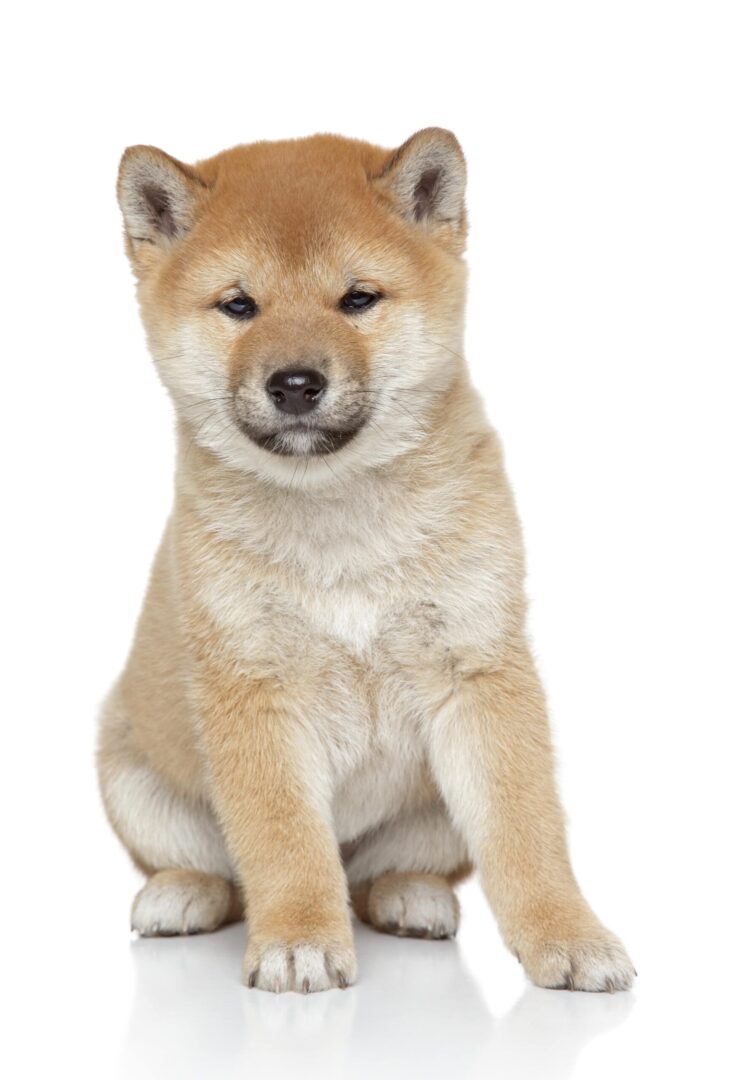
These are just a few of the best dog breeds for millennials – there are countless others. A bit of vigorous Googling can give you all sorts of other suggestions for dog breeds that will fit the millennial lifestyle.
Best Dogs for Seniors
I have an elderly friend who lives just down the road from me, whose Red Bone Coonhound passed recently. He’s been thinking about getting another dog, and being of an intrusive helpful nature, I offered to do a bit of research for him in order to help him determine what kind of dog breeds are best for seniors.
“Listen, you young whippersnapper,” my friend said (and I swear I am not making this up; he actually said “whippersnapper”), “I’m 85 years old and I’ll dadgum decide on my own what kinda goldarn dog I want!”
I’m not making that up either – he actually did say “dadgum” and “goldarn”!
Back to the point. I did the research anyway! Following (in alphabetical order) are the dog breeds that are generally considered to be best for seniors.
1. Bichon Frise
The Bichon Frise is a small dog with an exuberant personality, and usually weighs 12 pounds at most. These little guys are easy to train and very affectionate, and require only moderate exercise. They do very well in apartments, and are easy to groom despite their abundance of fluffy, white fur. Bichons love to snuggle and will happily cuddle up in your lap while you sip a cup of tea or hot chocolate and watch your latest episode of Coronation Street!
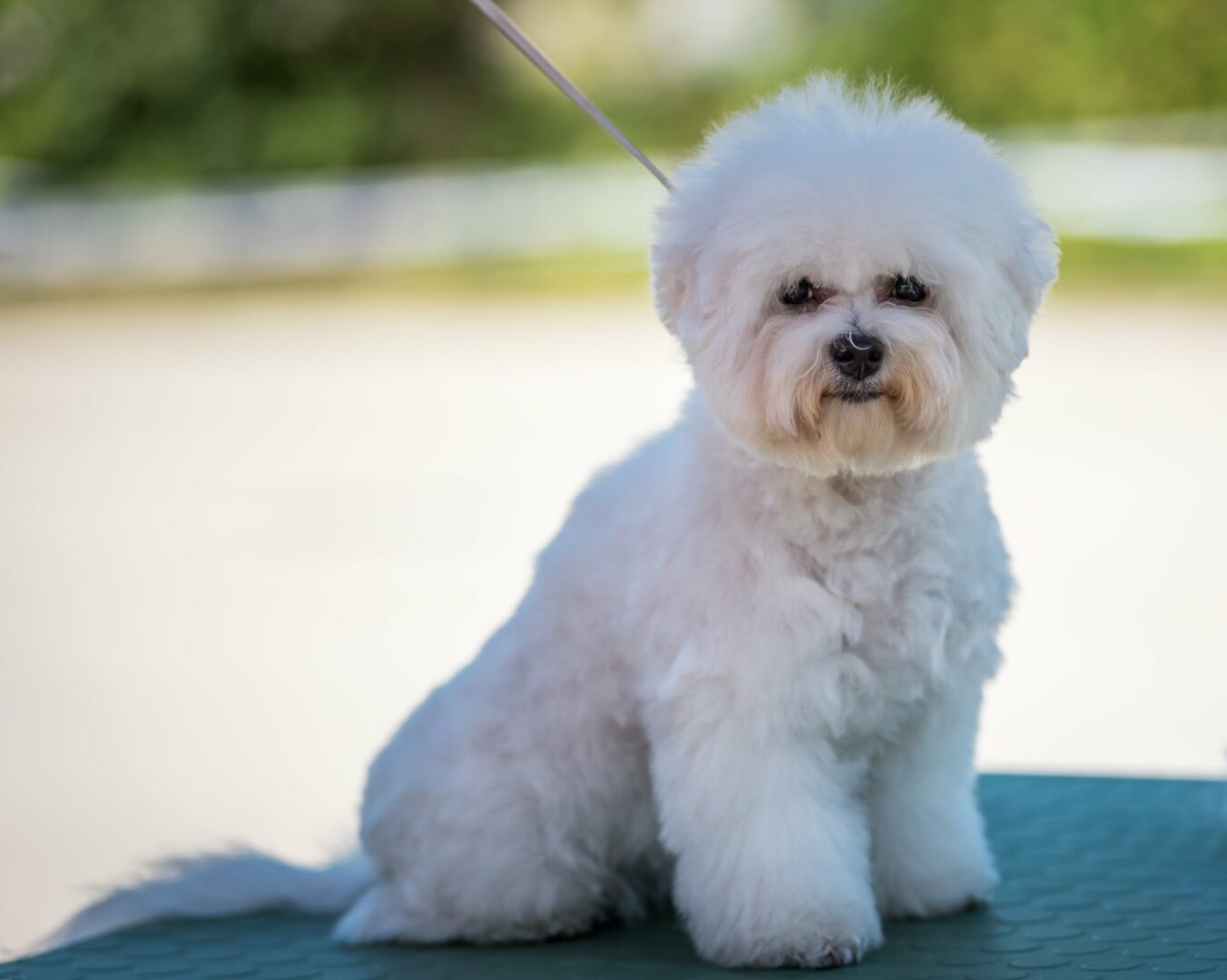
2. Cavalier King Charles Spaniel
Cavalier King Charles Spaniels are also among the small breeds that love to snuggle more than anything else! Cavaliers are a bit bigger than Bichons, ranging from 11-18 pounds, and require a bit more grooming because of their very long coats. They also need to have their adorable long ears cleaned regularly. If you don’t mind a bit of work when it comes to grooming (or the occasional trip to a professional groomer), the Cavalier might be the right dog for you.

3. French Bulldog
If you’re a senior who still enjoys an active lifestyle, you could do a lot worse than a Frenchie! They do need regular exercise, but don’t have a whole lot endurance, so when you’re ready to call it a day and go home, chances are that your French Bulldog will be in the same frame of mind.
We’re moving up a bit on the scale size-wise here, with the Frenchie weighing 19-28 pounds – still pretty manageable in an apartment or small house. As to grooming, this short-haired dog doesn’t need a lot. However, it’s worth noting that if you’re a senior on a fixed income, French Bulldogs can be prone to skin issues and breathing problems. Make sure you can afford a little more in the way of veterinary care than just the basics, in case problems do occur.
French Bulldog
4. Greyhound
I know, you’re thinking “How in the world is a Greyhound a good choice for a senior – this is a racing dog that can weigh up to 80 pounds!”
Bear with me here. Greyhounds can actually be amazingly good for seniors, since they’re incredibly easy to train. They’re also less interested in exercising than they are forced to exercise. A Greyhound that’s rescued from the track is going to be less interested in running and chasing than he is in taking the occasional walk, and then cuddling up with his human. These are big dogs, yes, but ideal companions for elderly people who can usually handle them without difficulty.

5. Pembroke Welsh Corgi
We’ve already met these adorable dogs in the section on dogs for millennials. With an average weight of 24-30 pounds, Corgis are usually easily handled by the elderly, don’t need much in the way of grooming, and are very trainable. They do need a bit of exercise, so they wouldn’t be suitable for a total shut-in, but most seniors should be easily able to manage a Corgi.

6. Pomeranian
If you’re considering a dog on the low end of the scale size-wise, look no further than the Pomeranian. Some weigh as little as 3 pounds, and you won’t usually find one that tops 7 pounds. Poms are loyal and affectionate, and love to nap with you. If you’re a senior with grandchildren, though, this breed might not be ideal – Pomeranians are sometimes snappish with children.
So am I, LOL!

7. Poodle
Whether it’s a Standard, Miniature or Toy, the Poodle is a great dog for anyone, and among the most popular breeds. They’re quick learners, and extremely loyal. The Standard Poodle is a big dog, weighing up to 70 pounds. Minis can go up to 17 pounds, and toys up to 9. The amount of exercise your dog needs will depend largely on his size, although even the Standards can get by with a couple of walks a day. Minis and Toys can often be exercised in the home, simply by throwing a ball down a hallway several times.

If you’re a senior living in a bad neighborhood, a Standard Poodle is a strong enough dog to serve as a protector. If you live in a good neighborhood, a Toy or Mini will provide you with companionship and affection. Either way, a Poodle is a win!
8. Shih Tzu
This is another breed that is very popular among seniors, since it’s small and easily adaptable to apartment living. A Shih Tzu will not usually weigh more than 16 pounds at the outside, and is very trainable. Grooming is important though, as the breed’s long coat is prone to matting, which can lead to skin issues. Shih Tzus also sometimes develop breathing problem due to the shortness of the snout.

9. West Highland White Terrier
The Westie weighs in at 13-20 pounds, but is a very solid little dog. Low-maintenance and friendly, the West Highland White Terrier needs a bit of grooming, but doesn’t require trimming on a regular basis. Westies like to be exercised regularly, but if the weather is inclement and you’d rather stay indoors, your Westie will adapt over the short term without becoming destructive due to boredom.

This is not an inclusive list – just a snapshot of some of the breeds best suited to seniors. As you could tell from previous material, my take on it is that generally speaking, you should choose the dog that you want and that wants you.
Thoughts on Seniors and Dogs
Having said that you should choose the dog you want, and that wants you, I do have to tell you that there are things seniors should consider when choosing a dog. What’s most important here is that you select the kind of dog that best suit your abilities, regardless of how old you are. Age isn’t the only factor, but it’s an important one.
You know that I have Boxers, and that I am absolutely devoted to the breed. Fortunately for me, Janice and Leroy aren’t all that hard to handle. I’ve worked with them over the years, and they’re very cooperative. But would I be able, at this point in my life, to handle a Boxer puppy?
I’m not sure. My knees aren’t all that great, and my hips are going, and I have asthma. I suspect that my heart is always going to say “Boxer,” but is this going to be a case of my heart trying to write a check that my body can’t cash?
I don’t have to make that decision just yet, but if you do, please think long and hard before you decide on a particular breed. It’s simply not right to take a dog home, only to discover that you don’t have the physical ability to handle the dog. It’s always best to determine beforehand the type of dog that is going to work for you. Remember that your physical condition is a huge factor in deciding on the type of dog that is right for you.
Of course you also have to think about where you’re living, whether you’re still in the workforce, whether you have grandchildren, and so on. But the biggest factor for a senior who is thinking about getting a dog is almost always going to go back to physical ability, and not just in the here and now. You might be a very athletic 60-year-old and more than capable of handling, say, an active Rottweiler puppy.
What happens, though, 5 years down the road? You’re 65, and your Rott is in the prime of his life. Can you keep up with him?
More Thoughts on Seniors and Dogs
I really hate going in this direction, but here’s something else to think about.
Let’s pretend that you are a senior who can’t imagine being without a dog. I can certainly understand that, as I believe that a life without a dog is no life at all.
But here’s the thing – you’re old. Your dog might actually outlive you. If that happens, what will become of the dog? Do you have family that will take your dog?
If you need to depend on family to look after your dog after you’re gone, you might want to think long and hard about what is the best breed for you. Will your 20-something kids want that Shih Tzu that you love so much? Will they care for it for the rest of their lives? Or will they be thinking “Damn, I wish Mom had chosen a Lab”?
It’s something to think about. Of course I don’t think that you should choose a dog based entirely on what might happen if you die before your dog, you should keep in mind that not all breeds speak to all hearts. Talk with your potential survivors about how they feel about keeping your dog after your demise.
If you’re a senior looking to adopt a dog, these are very real considerations. Of course you want companionship, and dogs provide the very best kind of companionship. But can you really care for a dog? How is your health? Will your lifestyle accommodate a dog?
The most important thing here, I think, is to determine (regardless of your age) whether you are able to take care of a dog.
What if I Outlive My Dog?
Okay, if you’re a senior, that’s a very real possibility. But you still want companionship in the form of a dog.
In this situation, I’d encourage you to use a senior call-in line. They’re available in most states, and the way that they work is you set a specific time every day when you call in, and if you don’t call in, they assume that there’s something wrong with you and they come out and check on you. They’ll know if there’s something wrong with you or your dog.
In short, don’t think that just because you’re old, you can’t have a dog. There are support systems out there.
The Final Word: What is the Best Dog for Your Age?
The figures for 2018 on dog ownership by age would seem to indicate that certain breeds are more common to certain ages. However, I would hesitate to suggest that you should choose a breed of dog based solely on your age.
Owning a dog can have many benefits – the research has shown that owning pets delivers many benefits in terms of emotional, and even physical, health. Pet owners have lower blood pressure and a lower incidence of premature death. Getting out and playing with your dog is also one of the best ways to stay active and healthy.
Keep in mind, though, that not everyone is equal to keeping up with a high-energy dog. So if you don’t think you can handle a high-energy dog, choose one with a bit less energy. If you’re a senior yourself, you might also consider adopting a senior dog – you’re both getting old, after all!
Remember, too, that you can still have a dog no matter how old you are – there are supports available.
Related Content:
11 Ways to Help Your Dog Make the Most of His Senior Years
Top 9 Mistakes New Dog Owners Make
7 “Storm Season” Tips for Dog Owners
The Final Word on Dog Ownership by Age in the United States
It would seem that millennials have no preference when it comes to size. Middle-aged people can go either way and seniors seem to prefer small dogs. In the final analysis, though, it’s up to you. What dog speaks to your heart? Love comes in all shapes and sizes, and you should choose the breed of dog that speaks to you, that owns your heart.
It baffles me that dog ownership in the US is broken down by age. I can’ imagine being without my Boxers, no matter my age. I can see me being a hundred years old and still hungering for Boxers! But that’s just me.
Before you decide, though, think about your lifestyle, your income and your home situation. Then do what’s right for you and the dog that you are preparing to bring into your home and love. I wish you much happiness!


